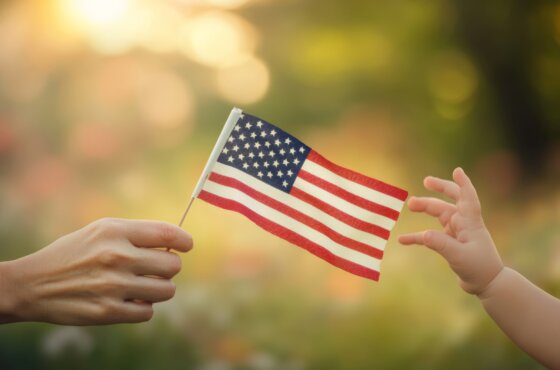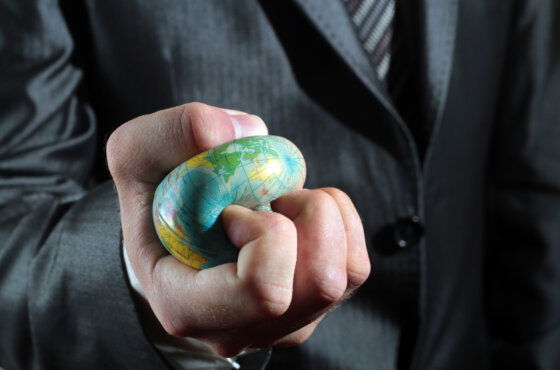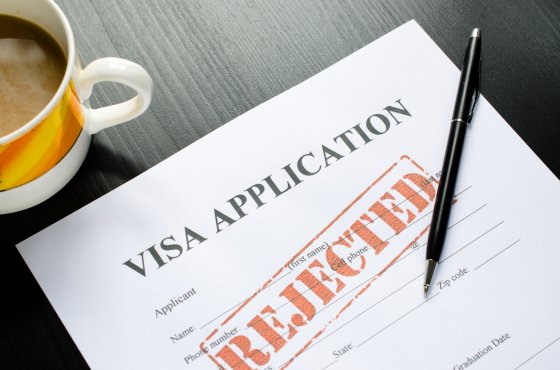‘Russian’ San Francisco: what is there left of the ‘Californian Brighton Beach’
The Richmond district of San Francisco is still indicated as Little Russia on the map. The old residents say it resembled either Derebasovskaya street in Odessa or Brighton Beach in New York thirty or forty years ago. Though today’s Russian oasis in San Francisco has almost nothing in common with crowded Brooklyn. Richmond is an upscale neighborhood located by the ocean near the Golden Gate Park and looks just like any other part of the city. Domes of the orthodox churches and certain banners are the only things that remind about the existence of Russian immigrants.
“Gearybasovskaya’s” seniors
Geary Boulevard used to be considered the center of the Russian neighborhood hence it became “Gearybasovskaya”. Also, this is the place that still has the Russian grocery store. Lyudmila, who has been living in San Francisco for 41 years says the stores like that used to be all over the neighborhood. There is only one remaining these days — a place for post Soviet and European food pilgrimagers from all over the city.

Lyudmila. Photo by the author.
“I left the USSR in 1979, before “Perestroika”. And I was lucky not to experience any traveling restrictions. We told the Soviet authorities that we were going to Israel but, like many others, went to the United States through Austria and Italy. It was seven of us in the beginning of the journey but only five have made it, the grandfather and the grandmother passed away on the way” — Lyudmila said.
She also said that it was difficult to assimilate to the new lifestyle. Lyudmila didn’t speak English and didn’t have a driving license. However she was lucky enough to find a job fast — she used to be a specialist in the field of electronics back in the Soviet Union and she received help from the Jewish community in the USA.
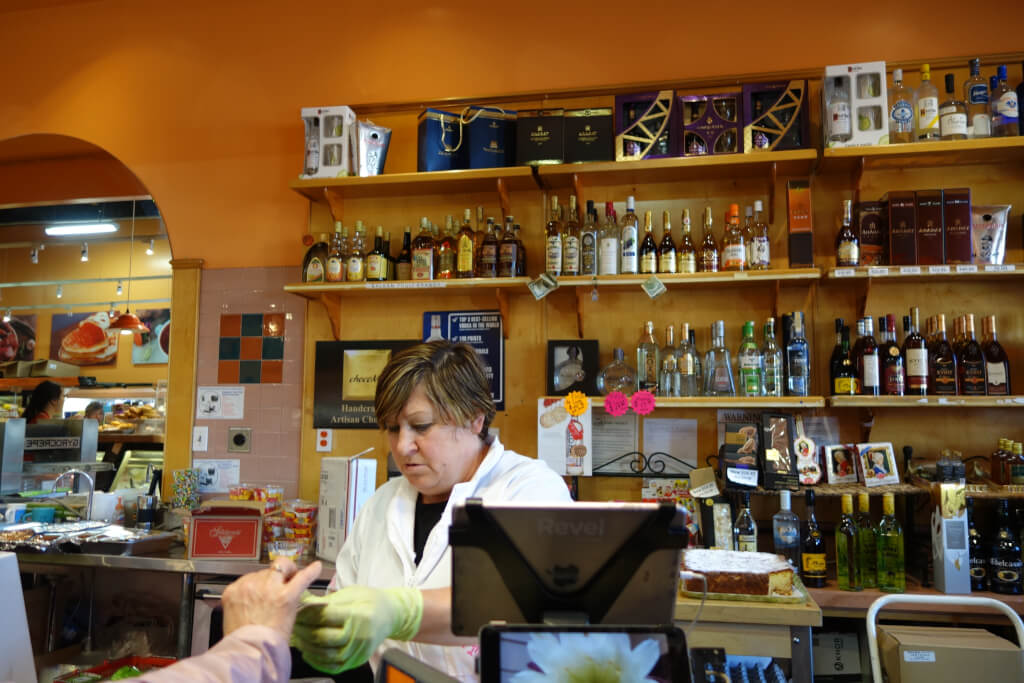
At the Russian grocery store. Photo by the author.
“The first job was temporary. I was responsible for expanding telecommunication networks, which was similar to what I was doing in the Soviet Union. After that, it was easier to find a permanent job” — Lyudmila tells us.
According to her, Geary Boulevard is the area where most of the Soviet immigrants had been moving into 40 years ago.
“You can find Russian speaking immigrants anywhere along the West Coast these days but it wasn’t always like that. Plus, not everyone can afford living in San Francisco due to very high rent. My parents used to live here but then the U.S Department of Housing and Urban Development moved them elsewhere. Though my parents and my husband are no longer with us anymore. They all passed away. A lot has changed during these years. My son found a job and moved to Seattle, WA. Besides, many older people move to Miami — its a perfect place for senior citizens and the rent is cheaper there” — Lyudmila explains.
From Russia to Hong Kong
Lyudmila also says there are more and more Chinese and Vietnamese immigrants moving into the area these days. Banners written in Chinese now peacefully coexist with the very few Russian markets and cafés.

Russian banner written in English peacefully coexisting with the Chinese one. Photo by the author.
“Younger people tend to move to more affordable neighborhoods, although the seniors, especially those, who don’t drive or speak English choose to stay here, because, there is at least the Russian grocery store” — Lyudmila tells us.
However, it would’ve been wrong to say that all the Russian speaking young adults have left Richmond. Louka works at the Russian-Georgian bakery on Geary Blvd, he’s been living in the area for only a couple of years but says there are just as many younger customers as the older ones. But turns out, the younger customers usually come from different towns and even different countries. For example, a Russian speaking couple from Hong Kong has recently visited the store to enjoy Georgian pastries.
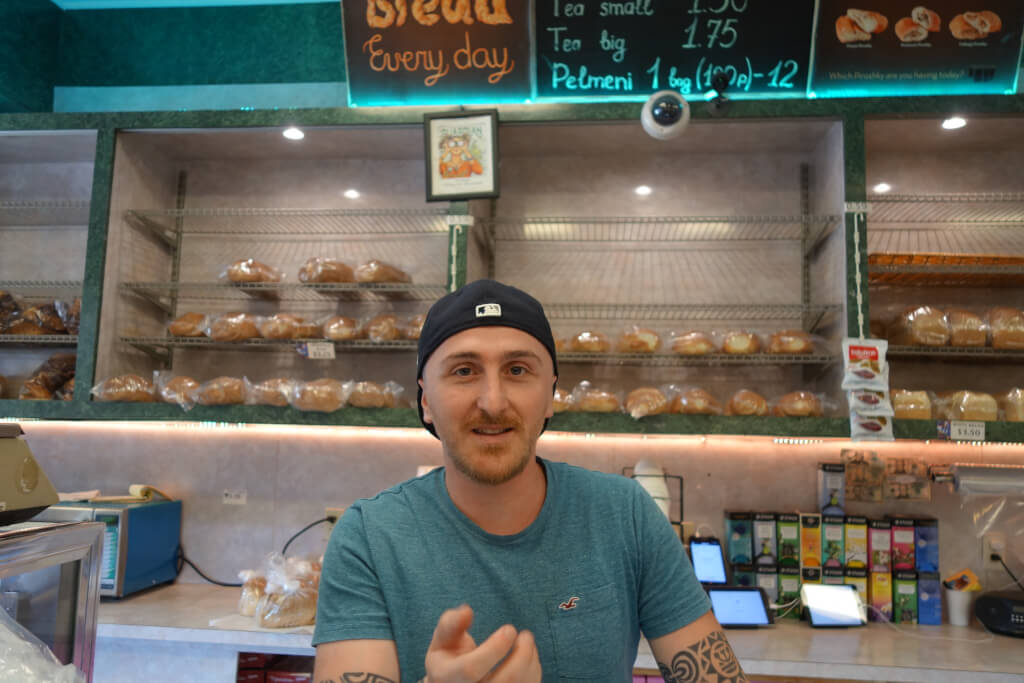
Louka. Photo by the author.
“However Chinese and Vietnamese people shop at our store as well. But I have to admit, I am under the impression that when it comes to the Russian speaking immigrants, it’s mostly the older ones who still live in the neighborhood” — Louka says.
“It’s hard to say whether there is the Russian speaking youth out there — they’ve all become completely Americanized — they speak English and they have totally blent in with the rest of the people” — Leo says. He’s been living in San Francisco for 28 years but doesn’t speak English well because of his age. He also doesn’t miss home, he says there’s no one left in his homeland.

Immigrants of various nationalities try Russian pastries. Photo by the author.
“My children brought me here and I’m thankful for that. I’m very glad to be here because I’ve undergone many surgeries that I doubt I would have had if I stayed in Russia. I’ve literally had one a few days ago. And the children are some fine fellows. They’ve advanced their English, started a business and they raise grandchildren now. Although my son doesn’t live here anymore, he’s in town of Richmond. But I don’t have nostalgia. I always try to take walks and I can still hear people speak Russian around here. That’s why this street still reminds me of Derebasovskaya. No matter what people say, the Russian speaking immigrants still live here” — Leo thinks.

Leo. Photo by the author.
Moreover, Russian heritage is reflected in some of the historical names. Mount Shasta, for instance, represents “счастье” (schast’ye) the Russian word for “happiness”. Russians used to occupy northern California all the way up to Sacramento, the colony was called New Albion in analogy with the British Albion. Fort Ross, established in 1812, is the hub of Russian settlements in North America. But these are historical monuments, and, perhaps, the name Little Russia will also become just a memory of what once was considered the Russian neighborhood.

US military orchestra performing near Geary Boulevard. Photo by the author.
However, just like Leo told us, you can still see quite a few Russian speaking people in the streets. Even though there are no more Russian written banners at the bakery or at the pharmacy there are still Russian written advertisements such as enrollments to the local Russian kindergarten. And that only means that the young Russian Americans still live somewhere nearby the legendary “Gearybasovskaya”.

The “pearl” of San-Francisco — The Golden Gate Park is located a couple of streets away from the Russian neighborhood. Photo by the author.
Читайте также на ForumDaily:
How To Give Your Kids the Best Education in the USA: Our Personal Experience
An Immigrant’s American Dream: How to Open a Steakhouse in New York and Welcome Donald Trump There
Подписывайтесь на ForumDaily в Google NewsХотите больше важных и интересных новостей о жизни в США и иммиграции в Америку? — Поддержите нас донатом! А еще подписывайтесь на нашу страницу в Facebook. Выбирайте опцию «Приоритет в показе» — и читайте нас первыми. Кроме того, не забудьте оформить подписку на наш канал в Telegram и в Instagram— там много интересного. И присоединяйтесь к тысячам читателей ForumDaily New York — там вас ждет масса интересной и позитивной информации о жизни в мегаполисе.




